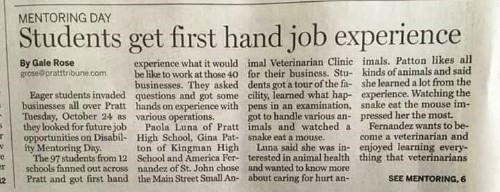Apostrophes
An apostrophe indicates either a contraction (isn’t for is not) or a possessive (the department’s stylebook for the stylebook of the department).
In news reports, avoid contractions except in full quotes.
In features, there may be a good reason (ie creating a chatty voice) to use doesn’t, they’ll and so on, but please be sparing.
Never use apostrophes for plurals that aren’t possessive: the 1990s, several MPs, NGOs are highly controversial.
The possessive form of it is its: Its future was uncertain.
It’s is the contraction of it is: It’s going to rain.
Proper names ending in s should usually, in the possessive form, end s’s: Mr Williams’s hat.
The exceptions are Jesus (Jesus’ teachings) and names where the s isn’t pronounced: Degas’ paintings.
In the plural, proper names ending in s behave like other plurals: The Williamses’ house.
Commas
Commas are used to separate words of the same kind in a list (in other words, where the commas could reasonably be replaced by and): It was a cold, clear, windy morning.
But note: Cheap local, national and international phone calls, where cheap could not be followed by and without changing the phrase’s meaning.
Commas are also used around “non-defining clauses” (see That/Which).
Otherwise, use commas only when not to do so would make a sentence hard to understand.
Semicolons
Semicolons are used to join sentences more tightly than they would be joined by a full stop: It rained all morning; it rained all afternoon.
Semicolons also separate items in a list, particularly if the items are already punctuated by commas: Matt Damon has worked with great directors: John Dahl, the neo-noir specialist who made The Last Seduction; Francis Coppola; Steven Spielberg; and, most recently, Anthony Minghella.
Although please note, readers don’t like reading them, so use sparingly.
Brackets (parentheses)
Brackets are rarely used in news reports, except to enclose very brief explanations: Zimbabwe dismissed yesterday a $400m (£280m) lawsuit brought against President Mugabe … He was programme coordinator of the UN’s refugee agency (UNHCR) in West Timor …
In features, brackets may also be used to enclose somewhat longer asides: Located between sandstone cliffs (where scenes from Butch Cassidy and the Sundance Kid were filmed), Utah’s Green Valley Spa is …
Note that the comma belongs outside the bracket.
In quotes, comments by the journalist go in square brackets: She said: “Mum’s worried about me, of course, but dad [her stepfather] really gives me loads of encouragement.”
Dashes
Dashes perform a similar function to brackets; they enclose parenthetical clauses or phrases: Hitchcock was a master of narrative suspense – the slow, slow build-up; the sudden eruption – of unsettling imagery, camera angles and music.
Note the distinction between the en dash – the size of dash we use – and the larger em dash — preferred by some publications.
Note also the distinction between a dash and a hyphen (see below).
Hyphens
Hyphens are used to show that two or more words are to be treated as a single unit: a left-wing magazine; an up-to-date report; 200-odd journalism students (as distinct from 200 odd journalism students).
Hyphens are also used when lower- and uppercase letters come together: anti-British; pan-African.
If in doubt, look the word up in a dictionary.
Miss a hyphen and this might happen:

Exclamation marks (screamers)
Except in reported speech, where someone is actually shouting or screaming something, use exclamation marks (often called screamers by tabloid journalists) only when writing for children’s or teen magazines, or in headlines that are exclamations: Not out!
Here is the late, great Keith Waterhouse, probably the greatest journalist Leeds has ever produced, on the use of screamers:
“The exclamation mark is an aid to good English. It is not a prop for bad writing.
A sentence that falls flat without an exclamation mark is a flat sentence. The exclamation mark will not inject drama into it. It must be re-cast.
An exclamation mark cannot tell the reader that a particular passage is funny. The most it can tell him is that it was meant to be funny”
Keith Waterhouse
Emphasis
Where emphasis is necessary in print (but not online), use italics. Online, use bold.
Don’t underline.
Use sparingly.


















You must be logged in to post a comment.